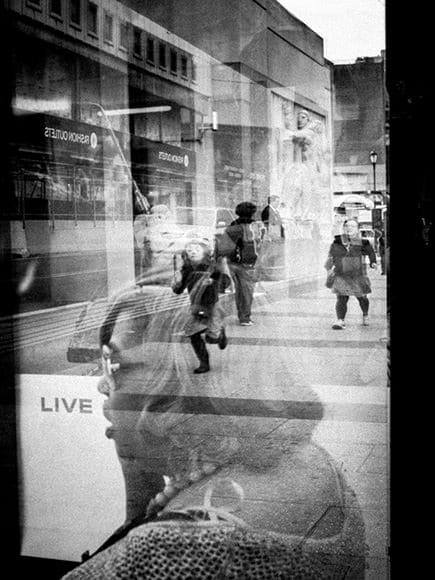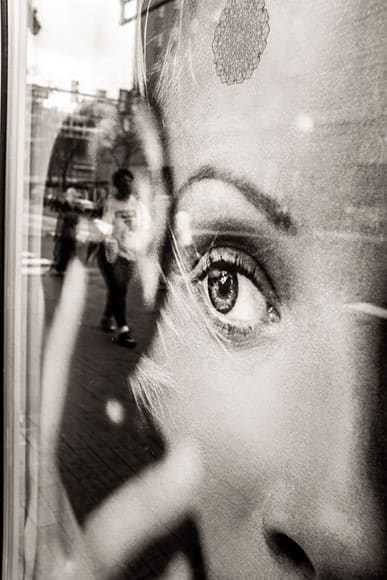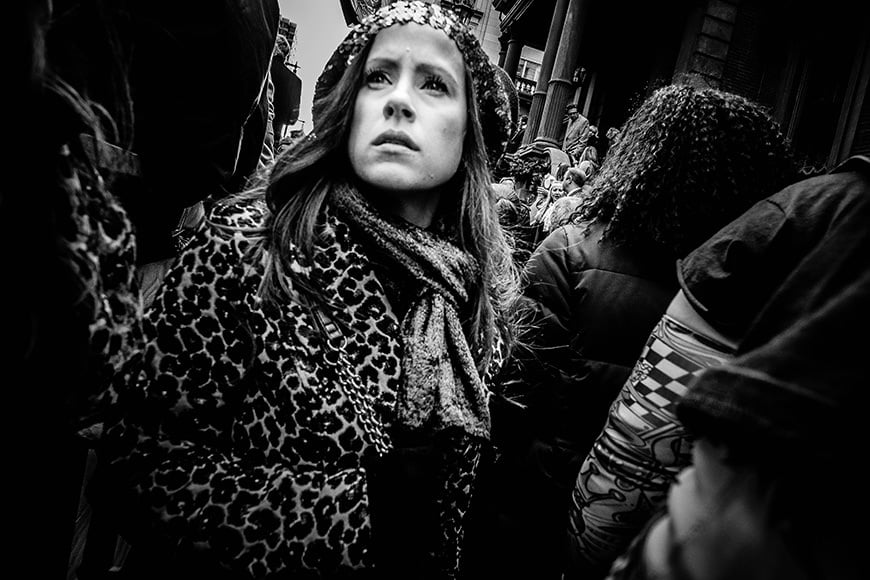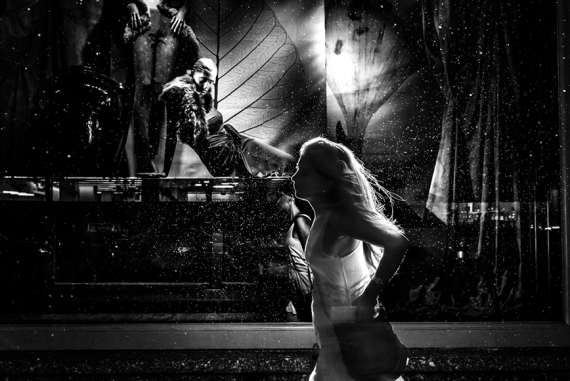Don Springer









I am 67 pushing 68 real hard. I have been captured by photography before 13 years old. My first darkroom was at that age. When my friend helped me make negs, I liked it but was not so inspired. Then later we made a print and I was gone.
My father died in an auto accident when I was 6. When I made a print of him from found negatives, I immediately felt the magic and even today at all times, I am captured by the magic. Nothing in my life has moved me as much as photography.
I was fortunate to have been liked by the curator of Prints and Pictures at the Philadelphia Museum of Art, Ding McNulty. Ding helped me find myself in many ways and I owe a debt of life to him.
I think you either love life and photography or you don’t. I am a shooter of life and that’s called a streetshooter. Ding called me that back in the early 70’s and it kinda stuck. Anyway, I name my cameras because they represent my process of photography. So, that gives me the love. I realize that life and photography is a collaboration of many sorts. I am not that egotistical to think I am “IT” and my camera is a tool. Rubbish I tellya.
My cameras are my friends and together we look for the photos out there looking for us.
So why did I choose these cameras in particular? Good question and I’m glad you asked. See, it all started when I was in Nam. I was a grunt, (infantry) and always had my Leica M4 with me. I used a 35mm Summicron
mostly and then a 50mm Summicron
. After many months, I became aware that my vision was very focused with 35mm. This is not so good in a combat zone but I could see my frame before I put the camera to the eye.
Anyway, this one camera one lens formed my way of working lifelong. Eventually I realized that my vision had a natural field of view. I taught this for many years and here it is for you, courtesy of Mark in a nutshell. It’s best performed with a zoom lens. Yeah, yeah I know but for this one time, try it. If you don’t have a zoom, use the lenses you do have.
Walk around and not in your normal setting where most things are memorized. Look at a scene that interests you. Make the frame in your mind. Then camera to the eye and move the zoom in and out till the screen shows what your mind’s eye sees. Do not move in and out just work the lens or lenses till you get close to the image framed in your head.
Do this a number of times. Shortly you will learn your stance and know what focal length is natural for you. I’m sure you get the idea.
The M43 camera, Pen F is an interesting camera. Mine is name Serendipity. I mostly use the Olympus 12mm f/2.0
, (24mm) because it lets me stay in close and I like to do that. It’s very wide and also has a DOF scale. So I can set the f-stop and then manual focus the aperture to the setting for hyperfocal distance. The other lens that I use a lot with the Pen F is the Olympus 25mm f/1.8
(50mm). Neither of these lenses are my natural FOV but the are on opposite sides of it. The 25mm is a 50mm FOV which is double the 12mm 24mm FOV. So it’s a 2x magnification.
Maybe this sounds like technical hogwash but it’s not. We all need a method to find the light for ourselves.
Here’s something else: There are basically 3 means of seeing the subject with the camera. Any other variation is just that, a variation. First and my favorite is the screen. This allows us to see the subject on the screen as a 2 dimensional reality in a 3 dimensional reality. We can move the camera and it’s not fixed to our eye. The whole time, if you pay attention, you see your image as it will appear on the PC. Don’t worry, Mac users have the same sensation.
The second is the OVF which in a way simulates the idea of a viewfinder. It has its benefits, for instance the ability to see outside the frame. Big deal huh? Yes, but the screen does it better anyway.
The 3rd method is the EVF. This is what the sensor sees exactly. So you see everything but not outside the frame. I use all three methods and even some not mentioned. I suppose that one could say that these are the tools of the trade. I agree and we all need to be familiar with them.
The thing that is most important is to absorb as much as you can and then forget it all because it’s burned into the brain and then the mind draws from it. You get to be on a relaxed mode of working. No need to always be uptight about things. If you love photography, then you must love living and life. So get out there and find the photos that are waiting for you.
My Gear:
The bag is the Cosyspeed Streetomatic. This bag is essential for any shooter that works the street for hours on any and many times a week. It eliminates back and shoulder aches.
The black camera is the Fuji X100F and is named Andre. The silver/black camera is the Olympus Pen F
and is named Serendipity. She sports the Olympus 12mm f/2.0
. Her partner in lenses that goes all the time is the Olympus 25mm f/1.8
.
There are extra batteries and each is numbered. When working and a battery dies, I use the next higher number. No mistakes, no lost time. The lens pen and a Zeiss cleaning cloth make the kit. I travel light thru life and no excess baggage needed.
Together with Olivier Duong and myself we have created The Inspired Eye. We produce a monthly periodical and many other inspiring products.
Be blessed my friends and good light to all. Thank you Mark for your patience.


Check out these 8 essential tools to help you succeed as a professional photographer.
Includes limited-time discounts.













